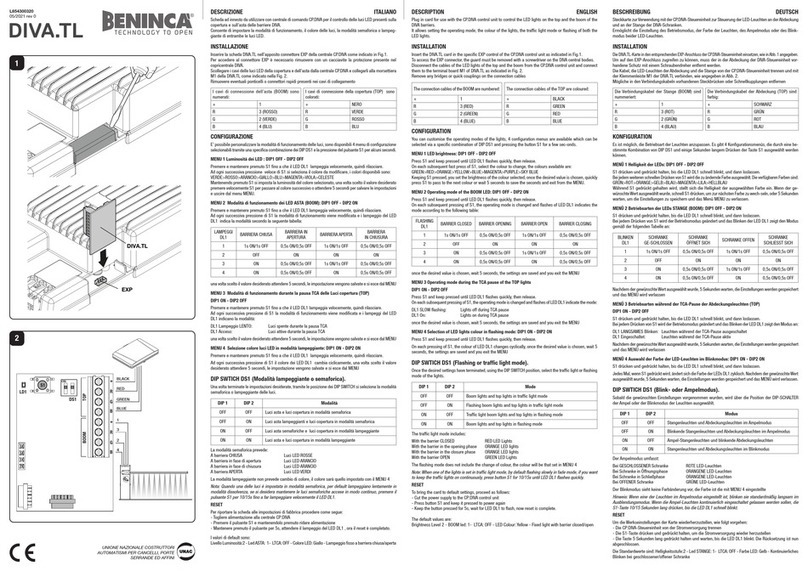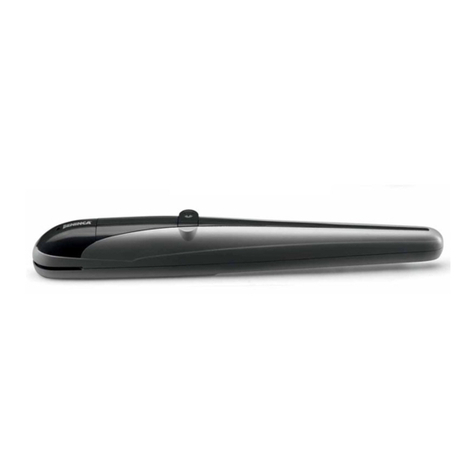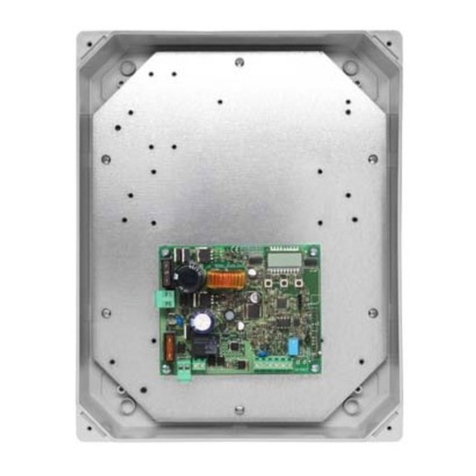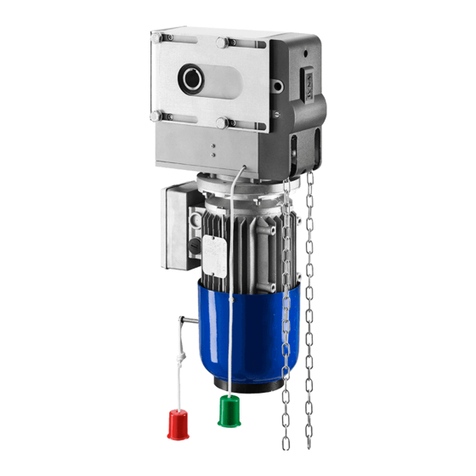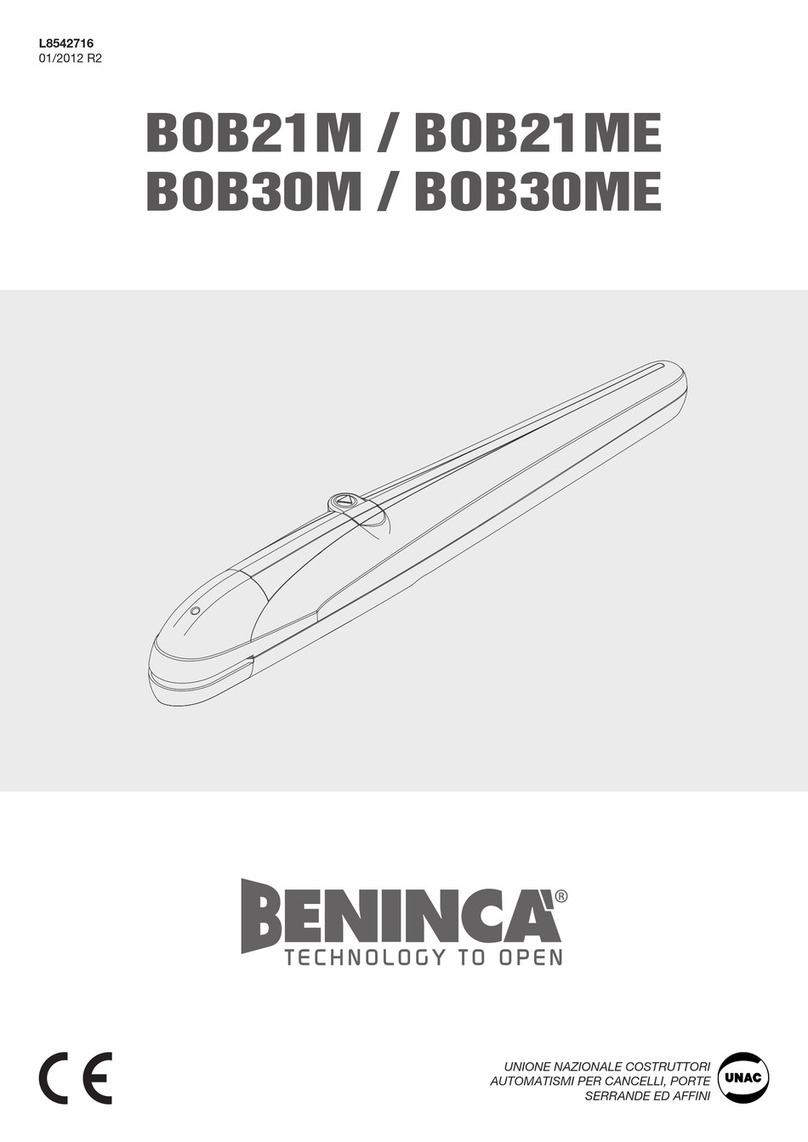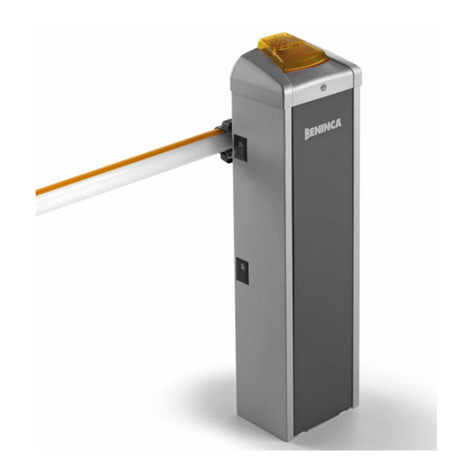
10
4) DIP-SWITCH FUNCTION
DIP1 Set-up DIP4 P.P.: operating mode
To be used only for the setting-up of the torque and the forewar-
ning and braking time. After moving DIP1 to ON:
- with P1 push-button the torque is adjusted.
- with push-button P2 the forewarning light is activated/
deactivated.
- with the Step-by-Step input or a memorised remote control,
braking length is adjusted.
See the related sections. After presetting the parameters,
move to OFF.
The operating mode of the “P.P. push-button” and the transmit-
ter are selected.
Off: Operation: OPEN > STOP > CLOSE > STOP >
On: Operation: OPEN > CLOSE > OPEN >
DIP2 Multi-flat DIP5 Rapid closure
The multi-flat function is enabled or disabled.
Off: disabled multi-flat function.
On: enabled multi-flat function.
The P.P. (Step-by-step) impulse or the impulse of the
transmitter have no effect in the opening phase.
The rapid closure is enabled or disabled with (only with
activated TCA)
Off: disabled rapid closure
On: enabled rapid closure. The triggering of the photocell
involves, after approx. 3s, the closure of the door.
DIP3 PHOT: operating mode DIP6 Programming
The operating mode of the PHOT input is selected
Off: Input, activated in both opening and closing phases
On: Input, activated in the closing phase only
It is used exclusively for programming the advanced functions
or in the case of the SERVICE MAN MODE.
5) STROKE ACQUISITION & SLOWDOWNS
To adjust braking length in both opening and closing phases, proceed as follows:
1) Close or open the gate (make sure that the closing/opening limit switch is pressed).
2) Move DIP 1 to ON (DIP 2-3-4-5-6=OFF)
3)
Send PP control signal (through Step-by-Step Input or memorised remote control). The gate starts opening at normal speed.
4) When the gate reaches the desired braking point, send another PP control signal, the gate will start braking until it is completely
opened. Subsequent PP control signals will be ignored.
5) With totally open and stopped gate, send a PP control signal (through Step-by-Step Input or memorised remote control) The gate
starts closing at normal speed.
6) When the gate reaches the desired braking point, send another PP control signal, the gate will start braking until it is completely
closed. Subsequent PP control signals will be ignored.
7) Move DIP1 to OFF again.
NOTE:
If braking length does not require any adjustment in both opening and closing, leave the gate to totally open/close without sending
a PP control signal to start braking. If safety functions (STOP and PHOT) are activated, the adjustment procedure will be blocked.
Repeat the procedure from the beginning. During this phase, the anti-crash sensor is disabled. if the Encoder device is installed, the
anti-crushing sensor is disabled during the acquisition phase.
6) RESET STROKE ACQUISITION & SLOWDOWNS
To set the control unit to function without slowdowns (timed operation regulated by TW trimmer), proceed as follows:
1) Move the gate to an intermediate position, far from the limit switches
2) Move DIP 1 to ON (DIP 2-3-4-5-6=OFF)
3) Give the Step/Step command through the PP input or remote control
4) The flashing LEDs will confirm the initiated reset
5) When the LEDs turn off, move DIP 1 to OFF
The control unit has deleted data relative to the stroke and slowdowns.
7) SERVICE MAN MODE
With all DIPs on ON, the control unit switches to SERVICE MAN mode.
The PHOT input has the CLOSE push-button function (connect the button with N.O. contact).
The PP input has the OPEN push-button function (connect the button with N.O. contact).
The OPEN/CLOSE push-buttons must be kept pressed during operation. The opening of the STOP input stops the motor. The
contemporary pressure of OPEN/CLOSE stops the motor.






